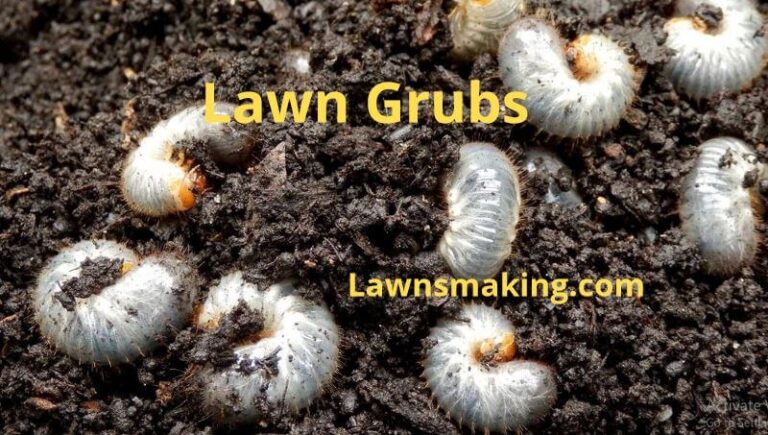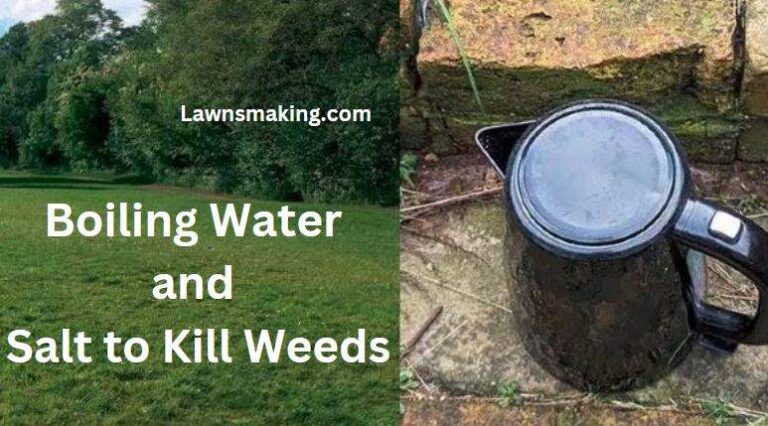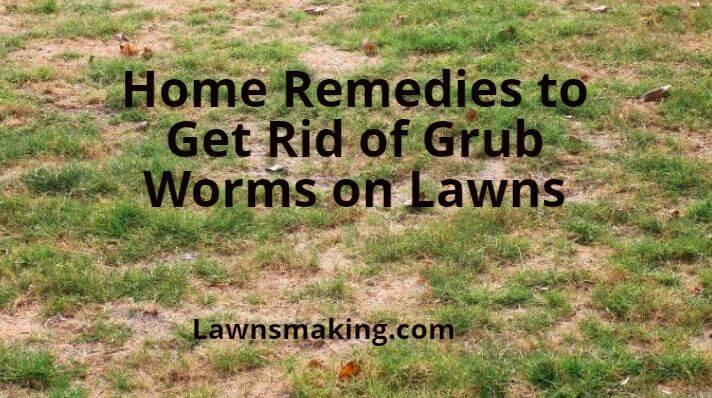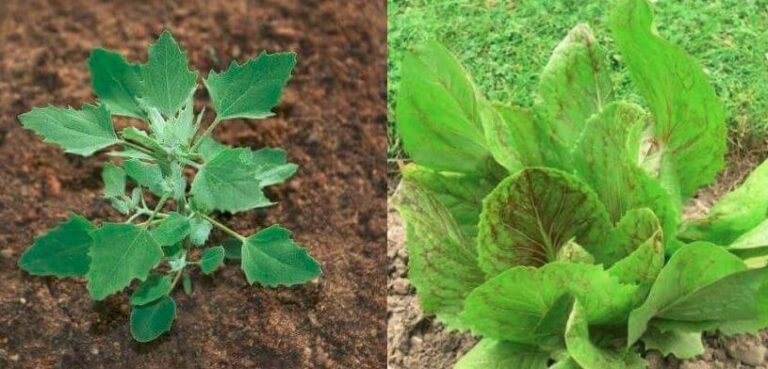
Using salt as a natural alternative to chemical herbicides is a time-honored garden hack. However, many lawn owners still need to learn about it. Hence, there are many pertinent questions, such as, how long does it take for salt to kill weeds on a lawn?
It can take about 3 to 10 days for salt to kill weeds on a lawn. However, this will highly depend on several factors, including the type of weed being eliminated, the weather conditions at the time of application, the type of salt used, etc.
I’ll explore everything you should know about salt as a weed killer in this detailed article. Keep reading to understand how this cupboard staple eliminates weeds, the factors influencing its effectiveness, and much more!
Understanding Salt as a Weed Killer for Lawns
Recently, many lawn owners (including you and me) have shown considerable interest in using salt to control weeds, staying clear of commercial chemical herbicides like glyphosate.
Therefore, you may want to know how this household item works in eliminating notorious weeds, the salt type to use, and if there are environmental considerations.
Here’s a breakdown.
The Science Behind Salt’s Effectiveness
According to basic biology and chemistry, salt ( sodium chloride) works to kill weeds (and other plants) in three ways.
- It dehydrates the plant by drawing water from nearby cells and tissues through osmosis, disrupting its internal water balance. This results in foliage wilting, burning, and death.
- When high salt concentration is dissolved in water and applied to the soil, it releases sodium and chloride ions, displacing the soil’s minerals. This can lead to mineral deficiencies in plants and eventually death.
- Absorption of high salt concentrations by plants can lead to the accumulation of chloride ions in the leaves, impeding photosynthesis and chlorophyll production. This causes inadequate energy (food) production, marginal scorching, and die-back at toxic levels.
Also Read: How to Kill Weeds With Boiling Water and Salt: Step-by-Step Guide
Types of Salt Commonly Used
Two types of salts are commonly used to control weeds in lawns and gardens. These are rock salt and table salt (iodized or non-iodized).
Both rock salt and table salt are primarily sodium chloride, but rock salt contains potassium, calcium, and magnesium traces; hence, it is termed impure. It is also grey, more chunky, and coursier in texture than table salt.
Table salt is a purified form of rock salt with white and finer crystals. This property gives it an edge over rock salt by making it easily soluble in water, acting on weeds more efficiently.
Sea salt can also be used in weed control, although it’s less common and efficient than rock and table salts.
And if you are wondering whether to use Epsom salts, the answer is no. Experts do not recommend using it because it will require very high concentrations to be effective. This may damage the soil long-term.
Find Out: Can Bermuda Grass Choke Out Weeds?
Environmental Considerations
As you’ve already seen, too much salt is as toxic to plants as it is to humans.
And while it is effective in weed control, green thumb gurus highly advise against using it.
Salt comes with its dangers to the environment. It can cause severe soil fertility issues that can take several years to be resolved.
Have you ever heard of the age-old narratives of salting the earth?
Salting the earth was a punitive strategy conceivably used by ancient civilizations such as the Romans, Greeks, and Persians to conquer their enemies, ensuring they never recover.
These empires sprinkled salt on their enemies’ productive lands, rendering them infertile for many years.
The most notable example of salt sowing allegedly happened in 146 BC towards the end of the third Punic War. It’s believed that the Romans poured salt into the agricultural lands of the City of Carthage to mark its destruction following a fatal siege.
This illustrates why experts oppose using salt in lawns and gardens.
Salt is a non-selective herbicide. It kills everything, including the grass on your lawn.
Salt does not decompose.
Its accumulation can disrupt the soil’s pH. It can also harden the soil particles, modifying its structure. This makes it difficult for grass and higher plants to absorb water, leading to stunted growth or death.
Salt accumulation is also toxic to the soil’s microfauna and can result in massive
biodiversity loss.
Furthermore, it can contaminate nearby freshwater bodies through surface run-off, killing aquatic life.
For these reasons, it’s best to use salt on small-scale areas with secluded weed patches away from grass, ornamental plants, crops, and freshwater bodies.
Alternatively, consider using it on paved regions where you’ll not worry about the soil’s long-term health. This can be on the weeds growing in the cracks of patio stones, driveways, and pavements.
Factors Influencing the Effectiveness of Salt on Weeds
The success rate of salt in weed control is determined by several factors, as seen below.
Type of Weed
Salt kills young, shallow-rooted weeds with broad leaves more effectively than those with deep roots and woody stems.
Shallow-rooted plants are limited in the amount of water they can absorb, making them more susceptible to salt toxicity.
The destruction process is even more rapid if the plant has broad leaves since they’ll increase the surface area for water loss.
On the other hand, deep-rooted plants can survive toxicity because of their dense root network that can channel into freshwater, diluting the concentration of harmful ions.
If you’re looking to kill deep-rooted weeds, consider applying copious amounts of salt directly to their base. Do this repeatedly over an extended period to overwhelm the plant.
Type of Soil
This kitchen staple performs better in environments with compact soil than fertile and well-drained.
The latter allows water to seep through it relatively quickly and not pool. Water can sweep the salt away before effectively acting on the weeds.
You, therefore, have to use generous amounts of salt on this soil to reap good results.
Compacted soils around driveways, pavements, and between crevices have lower water infiltration and drainage rates. The salt will have enough time to act on the weeds before being carried away by water.
Type of Salt
As mentioned earlier, some salts are more effective in controlling weeds than others.
Table salt is the most effective and preferred type because it’s pure and can dissolve quickly in water, increasing the plant’s absorption rate.
Rock salt is also a good option, although it’s impure. You may also need to crush the chunks into tiny particles before applying them to the weeds.
Sea salt and Epsom salts are impure and least effective, requiring enormous amounts.
Weather
The atmospheric condition during the application can also impact the effectiveness of the salt on the weeds.
Salt is a soluble substance. It can be dissolved and carried away by precipitation – rain, snow, mist, and fog. So, the method will be inefficient in these weather conditions.
Similarly, high evaporation rates will cause salt crystals to clump together in hot and dry weather, rendering the weed control method useless.
Aim to use salt when environmental temperature and moisture are moderate so it can dissolve and stay around the plant roots.
Application Methods and Best Practices
You can use salt to kill weeds by:
- Applying the crystals directly at the base of the plant.
- Spraying salt solution onto the weeds.
You can pour salt crystals on the soil beneath the target weed, but it’s not the best practice. The crystals can quickly be scattered by wind, water, or foot traffic to the adjacent vegetation and soil, causing harm. You also risk using excess salt.
This weed-killing technique works best when the salt is diluted with water and applied directly to the weed.
You can start with a reasonably weak concentration and then increase the amount with time until you observe changes in the target weeds. The 3:1 ratio of water to salt will be just right.
Consider increasing the salt-to-water concentration in the ratio of 2:1 in regions where soil health is a non-issue.
Use boiling water to make the salt solution more effective, as it’s a great weed killer. Boiling water also increases salt solubility.
Similarly, add vinegar and dish soap to the concoction to increase efficiency. These ingredients will lower the water’s surface tension, increasing absorption.
Safety Precautions
It is critical to take extreme caution when using salt to kill weeds due to its toxicity. Here’s what to do.
- Aim for targeted application – You’ll want to apply the salt solution directly to the weeds, taking extra care not to touch the nearby vegetation. You can use a spouted kettle or a funnel to achieve this.
- Use the right salt concentration – Even though a higher salt concentration will effectively eliminate weeds, finding the right balance is crucial to avoid contaminating the soil and destroying the surrounding vegetation.
- Safeguard the nearby plants – Protecting your grass and ornamental plants from salt exposure is essential while tackling these notorious intruders. You can use burlap, plastic, or wood to create physical barriers or utilize shielding techniques.
- Limit salt use – Overall, it’s best to minimize the use of salt in eliminating weeds owing to its potential environmental harm. Instead, employ other less impactful and natural solutions like boiling water, mulching, vinegar, hand-pulling, etc.
Final Thoughts
Weeds are eyesores to the aesthetics of our lawns. Even though we’re continually polishing our weed management skills, they keep sprouting and getting on our nerves, compelling us to invest in alternative methods – like using salt.
Salt may be a natural, cheap, and effective weed control method, but overdosing your lawn with it can harm the environment in numerous ways.
As such, you must observe extra care by using it sparingly and directly on targeted weeds. Alternatively, consider using other less harmful weed control methods.





